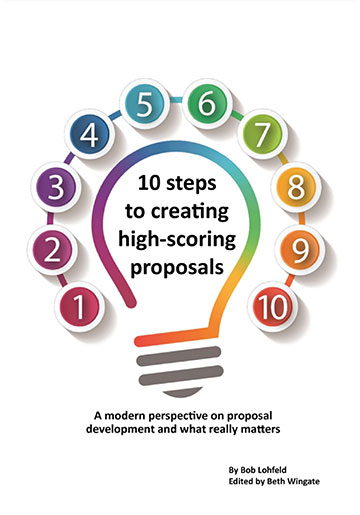How to Survive and Thrive Under FAR Part 11 Changes

This article focuses on changes to Federal Acquisition Regulations (FAR) Part 11 – Describing Agency Needs, identifying the opportunities and risks that industry growth teams face as a result of FAR 2.0 acquisition policy changes, and exploring the implications for government buyers and capture, proposal, oversight, and procurement professionals. This is the latest article in a series on the impact of the Revolutionary Federal Acquisition Regulations (FAR) Overhaul (RFO) changes on government contractor (GovCon) business development, capture, and proposal programs by Bruce Feldman and Jacob Betram. If you would like more information concerning how to address FAR changes, contact Lohfeld Consulting.
Introduction to FAR 2.0
On May 6, 2025, the Office of Management and Budget (OMB) launched Phase 1 of the FAR RFO, also called FAR 2.0[1], to reduce red tape and empower agencies to buy more flexibly and be more mission-aligned. The changes proposed for FAR 2.0 are implemented as FAR deviation guidance, with formal change approvals planned for late FY25 and beyond.
FAR 2.0 shifts the acquisition regulation paradigm to decentralize acquisition authority, focus federal regulation on statutory compliance, and empower agencies to develop agile, mission-first frameworks. The specific revisions to FAR Part 11 have the greatest impact on government contracting officers at acquiring agencies, as they must now ensure that solicitations are strategic in their intent and align with policies that prioritize commercial products.
Overview of FAR Part 11 Evolution
The original FAR Part 11, published in the original FAR release in the 1980s, was detailed and prescriptive, emphasizing design-specific requirements, fixed specifications, and tightly defined acquisition procedures that often limited flexibility and innovation. The most recent FAR Part 11 version incorporates over 40 years of modifications, ultimately becoming a guide for federal agencies in defining their needs when acquiring products or services, without unnecessarily restricting competition or favoring specific contractors. This evolution captures the idea that the government should describe what needs to be accomplished rather than prescribe how the work is to be done. Core ideas of this most recent FAR Part 11 version are:
- Promoting performance-based acquisition by describing needs in terms of desired outcomes or results.
- Avoiding constraints on competition created by overly specific requirements.
- Encouraging commercial item acquisition by specifying the use of market research and commercial standards.
The RFO revisions to FAR Part 11 further this evolution by following the FAR 2.0 mandate for simplification, consolidation, and strategic focus in a contemporary digital environment. The core policies remain intact, but procedural details have been deleted or moved to “buyer guides,” which are a resource for acquiring agency discretion.
Examining the Shift in FAR Part 11 Approach
The RFO FAR Part 11 revisions can be characterized primarily as clarification and streamlining. Table 1 summarizes the significance and impact of changes to the FAR Part 11 approach. The only noteworthy impacts on policy are in the removal of requirements that are not grounded in statute, consistent with the overall objectives of FAR 2.0. Some of these requirements are to be relocated to a non-binding “Buyer Guide,” which has recently been renamed to “Companion Guide.”
Table 1. Significance and impact of FAR Part 11 changes.
| Title and Revised FAR 11 Reference | Description of Change | Implications for Government Contractors |
| Changes to Criteria for Commercial Market Acceptance § 11.203 | Reduces the criteria that can be used for determining commercial market acceptance. | Makes it easier for offerors to propose commercial products and services to meet the needs of the mission. |
| Removal of Clauses on Variation in Quantity, Testing Procedures, and Pre-Award In-Use Evaluation § 11.6 – 11.8 | Deletes guidance on variation in quantity, testing procedures, and pre-award in-use evaluation. Per the FAR Part 11 Practitioner Album, “…clauses and provisions were removed and should now be handled as part of the contractual requirement and/or delivery schedule.” | Eliminates these FAR clauses pre-award. |
All the requirements grounded in statute remain in FAR Part 11, as well as two best practice provisions/clauses: 1) for liquidated damages and 2) the Defense Priorities and Allocations System (DPAS), a Department of Commerce regulation. Statements cross-referencing requirements present in other FAR Parts or clauses were dropped since they are redundant.
For Government Buyers: What’s New in FAR Part 11
GovCon BD and program staff should understand that FAR 2.0 updates affect acquisition officials, including contracting officers and program managers. For FAR Part 11 changes, these impacts include:
- Less Procedural Guidance. FAR Part 11 removes sections on delivery schedules, over shipments, and in-use testing from pre-award consideration. Contracting officers at acquiring agencies must increasingly rely on agency supplements and professional judgment to define acquisition strategies.
- Importance of Market Research Integration. Acquisition officials must apply the FAR 2.0 revisions to FAR Part 10 to describe agency needs, translating market research into performance-based requirements and the relative priority of commercial products and services[1].
For GovCon: What You Need to Do for FAR Part 11
Contractors need to recognize that FAR Part 11 changes are indicative of the overall intent to restructure the Federal Acquisition Regulations System (FARS). Areas for awareness resulting from FAR Part 11 changes include:
- Reduced Cause for Challenging Restrictive Specifications. The removal of pre-award guidance (for example, delivery variation) for streamlining reduces the basis for requesting negotiation of over-specification. Companies must now build stronger business and technical cases through RFIs and Q&A.
- Investment in Commercial Products and Services. While the FAR Part 11 changes that promote commercial products and services are minor, they are consistent with changes seen in other FAR part revisions. This is all driven by the FAR 2.0 objectives.
What This Means for Capture, Proposal, and Oversight Professionals
Plan on extended engagement with the procurement professionals at your customer agencies. Capture teams must:
- Increase Emphasis on Influencing Requirements Earlier. FAR Part 11 changes remove best practices and procedures from regulation. Consequently, these changes give procurement and contracting officials at acquiring agencies greater latitude in defining acquisition strategies. Capture teams must engage with these government stakeholders earlier to shape performance-based requirements that align with their commercial products and services.
Conclusions
The FAR Part 11 changes align with the overall FAR 2.0 theme of removing clauses that are not grounded in statute or are otherwise no longer applicable. In the case of FAR Part 11, the removed clauses affect program execution, not acquisition. Other FAR Part 11 changes, such as renumbering sections, are of less consequence.
If you need help applying new FAR regulations to your next capture or proposal, please contact Lohfeld Consulting; our experienced contracting officers and subject matter experts (SMEs) can assist you.
Relevant Information
By Bruce Feldman and Jacob Bertram
Bruce Feldman, Vice President, Lohfeld Consulting Group. Bruce brings more than 30 years of experience as a subject matter expert (SME) in business development, capture management, and proposal development specializing in Space and National Intelligence programs for the U.S. Air Force (USAF), U.S. Space Force (USSF), Intelligence Community (IC), Office of the Secretary of Defense (OSD), Department of Defense (DOD) 4th Estate, and Combatant Commands. He leads Lohfeld Consulting Group’s Artificial Intelligence (AI) initiatives and is the lead trainer for our Generative AI for Proposal Professionals classes, a trainer for our Capture Management and Strength-Based Winning® classes, as well as a consulting advisor.
Jacob Bertram is a senior leader in the federal procurement industry with over 20 years of experience spanning GSA, the Department of Energy, DCMA, and DCAA. He currently advises Fortune 500 companies, government agencies, and federal contractors on acquisition strategy, pricing, audit readiness, and operational efficiency. Jacob is DAWIA Level III certified in Contracting and a member of the Defense Acquisition Corps.
Lohfeld Consulting Group has proven results specializing in helping companies create winning captures and proposals. As the premier capture and proposal services consulting firm focused exclusively on government markets, we provide expert assistance to government contractors in Capture Planning and Strategy, Proposal Management and Writing, Capture and Proposal Process and Infrastructure, and Training. In the last 3 years, we’ve supported over 550 proposals winning more than $170B for our clients—including the Top 10 government contractors. Lohfeld Consulting Group is your “go-to” capture and proposal source! Start winning by contacting us at www.lohfeldconsulting.com and join us on LinkedIn, Facebook, and YouTube(TM).
SOURCES:
Paperback or Kindle
10 steps to creating high-scoring proposals
by Bob Lohfeld
contributors Edited by Beth Wingate
Subscribe to our free ebrief
Teaming friends, frenemies, and enemies—12 tips to mitigate harmful effects
Did you know that contracting officers spend up to 20% of their time mitigating disputes between teaming partners? In an informal poll we conducted on LinkedIn last month, 40% of respondents classified their teaming partners as “frenemies” on their last bid.
Explore Further
- Advice (538)
- AI (25)
- APMP (18)
- Army MAPS Contracts (3)
- Business Development (291)
- Capture Management (264)
- Complex Technology Grants Services (26)
- Favorite Books (5)
- GenAI (4)
- Go-to-Market (27)
- Graphics (5)
- Lohfeld Books (2)
- NASA SEWP VI Contracts (2)
- Navy SeaPort-NxG Contracts (2)
- NIST MSE Grants (1)
- NIST NAPMP Grants (2)
- Past Performance (63)
- Post-submission Phase (14)
- Pre-RFP Preparation (262)
- Proposal Management (335)
- Proposal Production (74)
- Proposal Reviews (38)
- Proposal Writing (104)
- Pursuit Phase (108)
- Research Report (4)
- Resources (63)
- Tools & Tips (417)
- Training (13)
- Uncategorized (223)

Sign Up for INSIGHTS and Download your FREE book
We'd love to help you with your proposals. Enjoy our complimentary Lohfeld Consulting Group Capture & Proposal Insights & Tips book with your FREE subscription to our Insights Newsletter.
GET YOUR FREE BOOK



